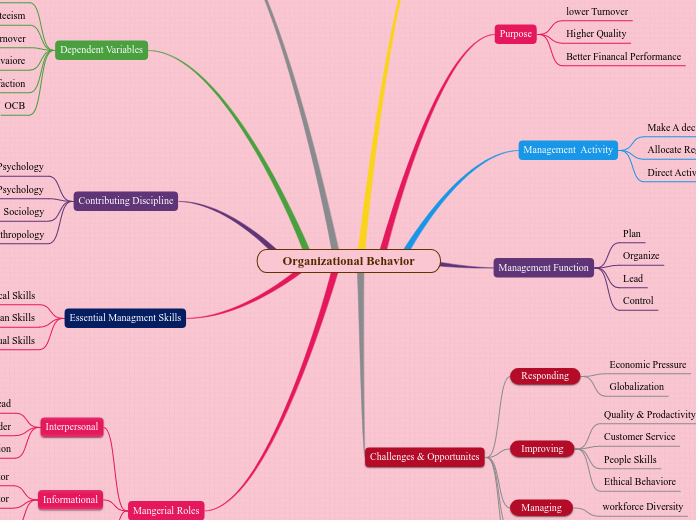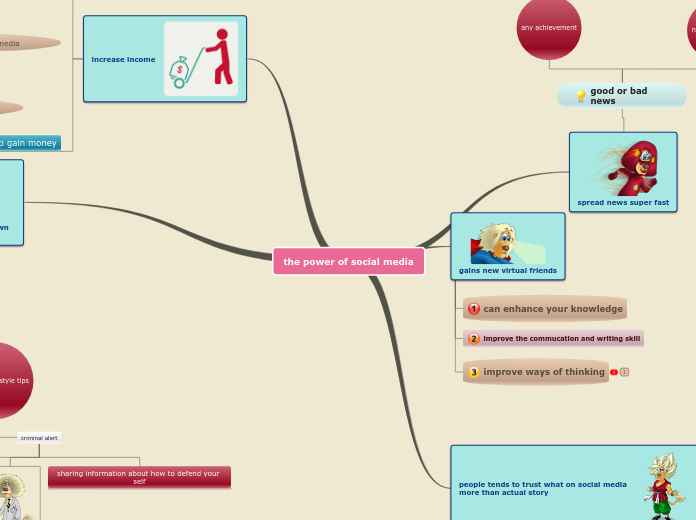KM
Knowledge management is the systematic process of finding, selecting, organizing and presenting information in ways that improve the understanding of a certain subject topic by a person. KM helps an organization gain advantage from his own experience and tacit know-how.
BRINT Institute
WIKIPEDIA
KMPRO
eLEARNING
50 Essential KM Sites
Managing K.
Others
RELOAD
ENSPIRE
Adobe Acrobat Connect Professional
Free+Online
DOCEBO
TUTOROM
TUBETORIAL
MOODLE
MINDMAPS
A mind map is a diagram used to represent words, ideas, tasks or other items linked to and arranged radially around a central key word or idea. It is used to generate, visualize, structure and classify ideas, and as an aid in study, organization, problem solving, and decision making.
Benefits of MindMapping
Manage and retain information more efficiently.
Communicate information more effectively. Make things visible and clearer
Enhance thinking and learning. Reveal what is behind the information
Recognize trends, clusters, and other patterns in your information
Synthesize separate pieces of information into new knowledge.
WIKImm
InfoRapid
Examples
Directory
APPS
OTHERS
ConceptDrawMM
MindJetMM
ON LINE (free+social)
CmapTools
BUBBL.us
MIND42
MINDOMO
Freemind
Public Maps
K.Conversion
INTERNALIZATION: EK->TK
INTERNALIZATION
series of iterations in which concepts become concrete and ultimately absorbed as an integral belief or value. Where externalization utilizes metaphors to facilitate K.conversion, internalization represents an active process of learning. In this mode, participant share EK that is gradually translated, through interaction and a process of trial-and-error, into different aspects of TK. TK is thus mobilized through a dynamic entangling of the different modes of K.conversion.
COMBINATION: EK->EK
COMBINATION
embodies the aggregation of multiple examples of EK. EK may be exchanged during meetings or conferences in which a diversity of K. sources combine to shape a new and enhanced conception.
EXTERNALIZATION: TK->EK
EXTERNALIZATION
Because the conversion of TK to EK involves the reification of an esoteric, cognitive abstraction into a concrete concept, metaphors are recommended as a way to facilitate this translation. Metaphors assist individuals in explaining concealed (i.e., tacit) concepts that are otherwise difficult to articulate by assisting individuals in forming impressions based on “imagination and intuitive learning through symbols”. In other words, metaphors create networks of related concepts as prototypes to facilitate the ability to understand abstract, imaginary concepts.
SOCIALIZATION: TK->TK
SOCIALIZATION
TK is tranferred through interaction between individuals wich may also be accomplished in the absense of languaje.
Individuals may learn and gain a sense of competence through behavior modeled by others by
ObservationimitationpracticeApprenticeships
Mentoring
Coaching
KMSystem
Knowledge Management System (KM System) refers to a (generally IT based) system for managing K. in organizations, supporting creation, capture, storage and dissemination of information. It can comprise a part (neither necessary or sufficient) of a KM initiative.
Belongings
COMPETITIVE INTELLIGENCE
"Competitive Intelligence (CI) is both a process and a product. The process of CI is the action of gathering, analyzing, and applying information about products, domain constituents, customers, and competitors for the short term and long term planning needs of an organization. The product of CI is the actionable output ascertained by the needs prescribed by an organization."
Key points of these definitions:
1. CI is an ethical and legal business practice. (This is important as CI professionals emphasize that the discipline is not the same as industrial espionage which is both unethical and usually illegal).
2. The focus is on the external business environment.
3. There is a process involved in gathering information, converting it into intelligence and then utilizing this in business decision making. CI professionals emphasize that if the intelligence gathered is not usable (or actionable) then it is not intelligence.
Community
CI Consultants
SCENARIO MGMT (SciMI)
GUIDELINE
Aurora WDC
Journal
CLAVES
RESOURCES
FORUM
ACI
Academy of CI - Fuld/Gilad/Herring
CI .org
CI PODCASTS
CI MarketPlace
Revista PUZZLE.es
SCIP
SOCIETY OF CI PROFESSIONALS
SCIP.ar
ICI (Blog)
ICI News
GLOSSARIES
K.inForm Glossary
FULD Dictionary
CI GLOSSARY
Key Concepts
COMPETITOR ANALYSIS
SEWS
STRATEGIC EARLY WARNING SYSTEM
GoogleAlert (Paid)
Google Alerts (Free)
CUSTOMER INTELLIGENCE
TOOLS
ZOHO crm
FREECRM
R&D
NEW BUSINESS CONCEPTS
BEST PRACTICES
KNOW HOW
GLOSSARY
BASIC TERMS
KNOWLEDGE
Meaningfully structured accumulation of information, that is relevant, actionable and based at least partially on experience.
VALUE
The real Value of K. is measured by its application.
K. has no intrinsic value of its own... It is only relevant when it is used.
The real value of it is real only if you change the way business is done.
TACIT: (TK)
Knowledge in practice. Developed from direct experience and action.
i.e.: Creative processes are highly tacit.
Usually shared through
Shared experience
Highly interactive conversation
Difficult to articulate
Subconsciously understood and applied
Situation Specific
Highly Pragmatic
EXPLICIT: (EK)
Abstract and removed from direct experience.
It's formally articulated or encoded.
It's the tangible output of K. work.
Value
K.Creation+K.Integration
The explosion of K.Growth, combined with its rapid distribution, makes it difficult to stay on top of the available K. in any industry. Thus a global K.Economy not only rewards the creators of new K. but also who can identify and integrate K. effectively.
Growth with use
K. creates new K. and thus grows with use. vs. capital assets that deplete with use.
Costs Reduction
Embedded in products and services, lowers the cost of basic infrastructure required to be competitive.
Easy Share
INFORMATION
Data placed within some interpretive context, and thus aquiring meaning and value.
DATA
Simbols or facts out of context, and thus not directly nor immediately meaningful.









